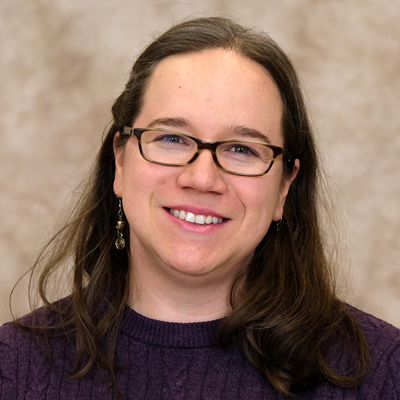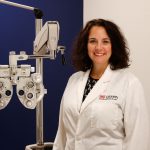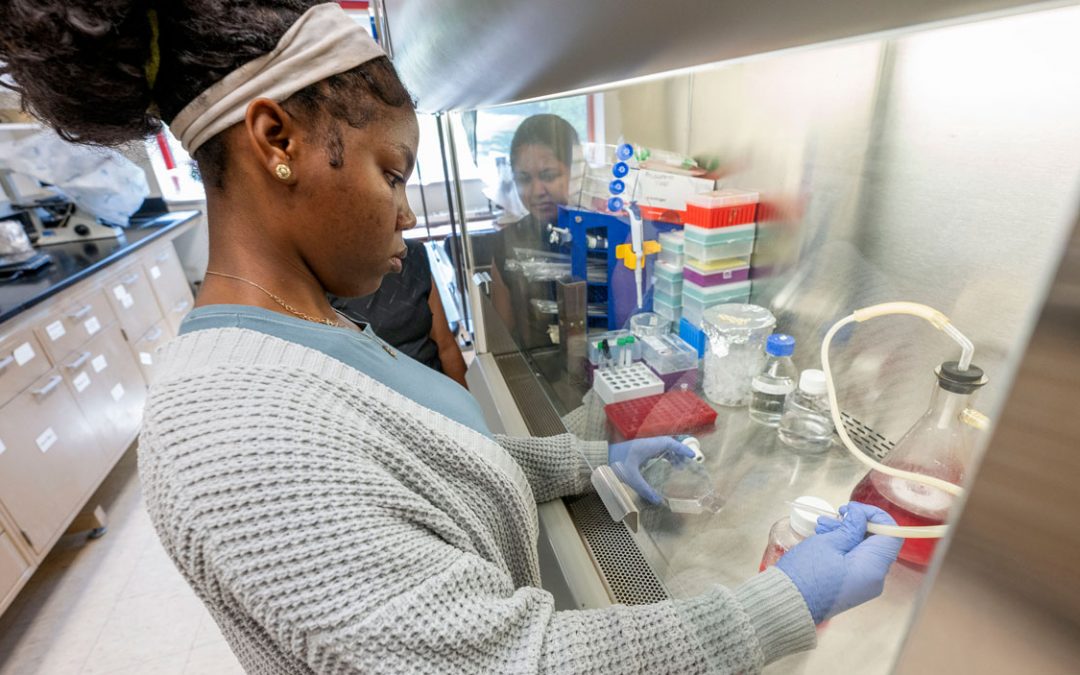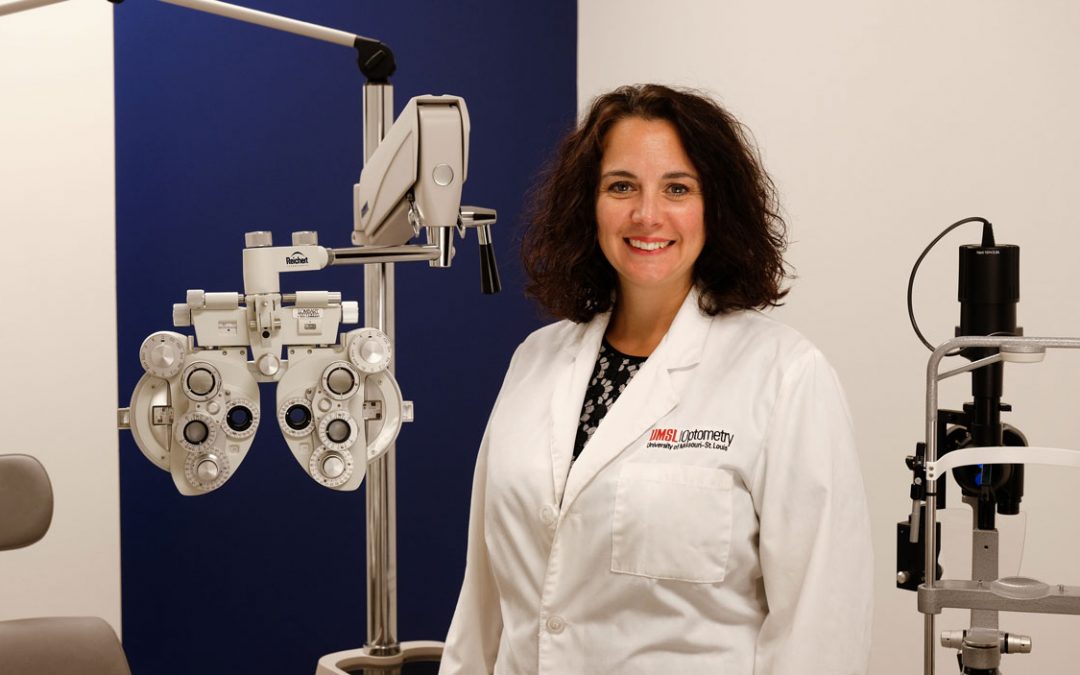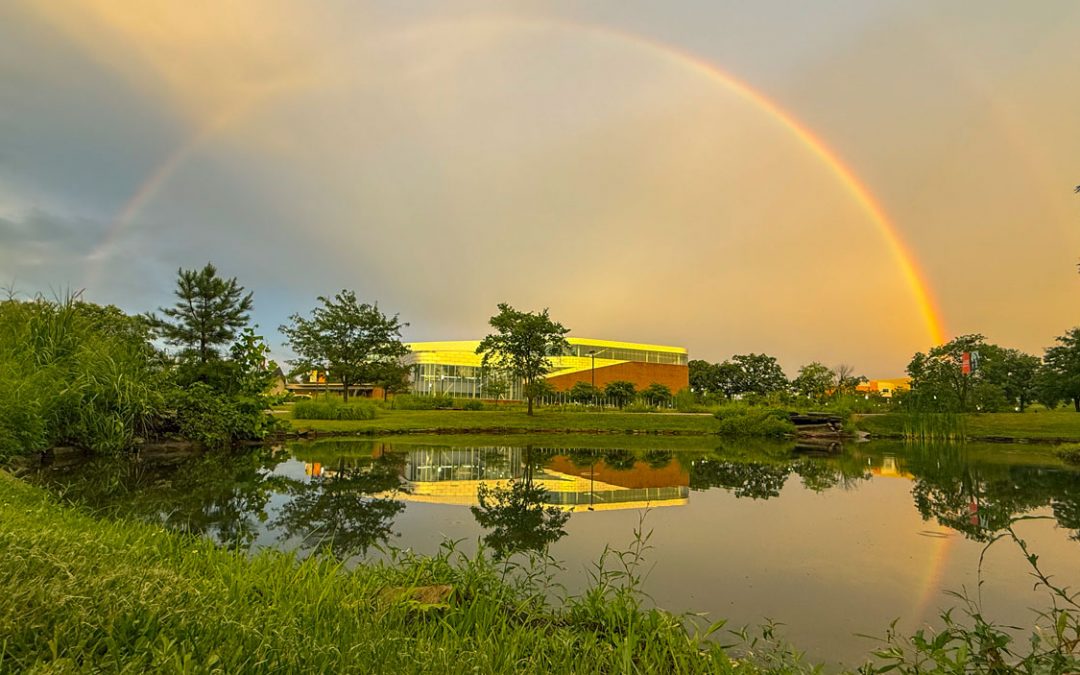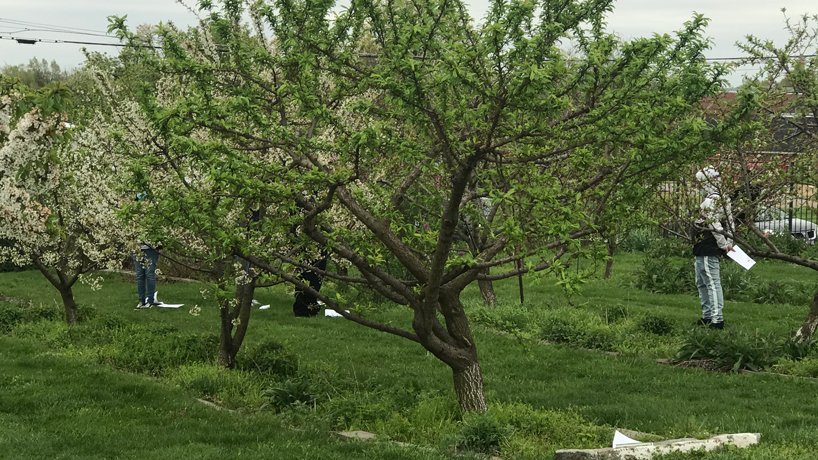
Biology faculty members Aimee Dunlap and Nathan Muchhala are working with researchers from the Saint Louis Zoo, Missouri Botanical Garden, Saint Louis University, Maryville University and Webster University to study pollination in urban and suburban orchards in the St. Louis region. (Photo courtesy of Aimee Dunlap)
A team of researchers from six institutions across the St. Louis region will spend the next three years studying ways to maximize pollination in urban and suburban orchards with a new $633,000 grant from the U.S. Department of Agriculture’s National Institute of Food and Agriculture.
Aimee Dunlap, an associate professor in the Department of Biology at the University of Missouri–St. Louis who specializes in urban ecology and bee behavior, is the director for the project.
She will we be collaborating with UMSL Associate Professor Nathan Muchhala; Ed Spevak, curator of invertebrates at the Saint Louis Zoo and director of the Saint Louis Zoo WildCare Institute Center for Native Pollinator Conservation; Gerardo Camilo, a professor of biology at Saint Louis University; Nicole Miller-Struttmann, the Laurance L. Browning Jr. Endowed Associate Professor of Biology at Webster University; Kyra Krakos, the coordinator of sustainability & environmental stewardship and associate professor of biology at Maryville University; and Peter Hoch, curator emeritus at the Missouri Botanical Garden.
They’ll be working with Seed St. Louis – formerly Gateway Greening – to identify orchards for their research, and they plan to involve students from all four universities.
“We’re a mix of bee people and botanists, and we’re really excited to be able to all work together on this project,” Dunlap said. “We’re looking forward to being all over the city, and I’m really excited about the student involvement.
“We’re going to have some busy springs collecting a ton of data, but that’s going to be fun.”
There’s been significant growth of urban agriculture in recent years along with increased attention to sustainability as people look for ways to mitigate the effects of climate change as well as address issues like poor nutrition and food insecurity in underserved communities.
But while commercial farms have developed ways to produce consistent levels of fruits and vegetables year after year, the yields coming from urban orchards are often less predictable. Some years might have an abundance of crops. Other years, there is only a small amount to collect at harvest time.
One goal for the researchers is to help people increase fruit production in urban and suburban gardens and level out their production year by year, so urban farms can be consistent sources of nutritious food in the communities where they grow.
“There are so many different types of orchards, and we want to be able to identify the characteristics of those orchards and the area around them that promotes bees and how those bees are being good pollinators,” Dunlap said. “That will tell us something important across all cities about what’s helpful.”
They also plan to test out different interventions, such as introducing different types of bees, including blue orchard mason bees, and nesting habitats such as brambles of blackberry stems into different gardens, to see how they promote pollination. They expect to learn lessons about bee behavior.
“By the end, we should be able to give some really good advice to people in small community orchards about some practices that that might work or might not work,” Dunlap said.
She and her collaborators are also excited about the community engagement component of the work. They plan to spend time in 36 orchards, all located in communities and maintained by volunteers, and they will focus the bulk of their research on nine of those – three urban, three suburban and three exurban.
“We hope to engage directly with orchard volunteers through on-site gatherings, activities and information sessions, where we can learn from their perspectives and share our results,” Miller-Struttman said.
The grant will support two UMSL graduate students working on the project, and Dunlap said they’ll also have several paid undergraduate research assistant position and will be incorporating aspect of the project in the animal behavior and ecology labs.
“There are going to be so many really cool projects – spinoff projects – for senior theses,” Dunlap said. “We’re always looking for good stuff for undergrads to do because there’s more demand for undergrad research in ecology than we can usually provide. This will be a fun addition for that.”
The UMSL students will also get to engage with other students from around the region.
“This is a great opportunity to really do collaborative science that connects so much of the pollination expertise here in St. Louis,” Krakos said. “As an added bonus, it connects our students in creating this research network around the project. That is an excellent opportunity for the next generation of young scientists.”


